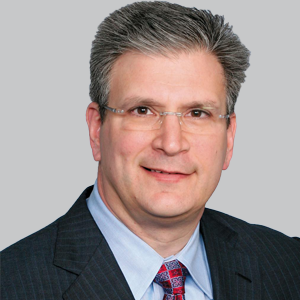According to a recent announcement, the FDA granted 510(k) clearance to Clearmind Biomedical’s Neuroblade System, which allows for minimally invasive procedures with integrated features such as visualization, illumination, irrigation, suction, coagulation, and powered debridement. The company also reported a successful completion of the first surgery using the Neuroblade in the United States, which was performed by Christopher Kellner, MD, a cerebrovascular neurosurgeon in the department of neurology at Mount Sinai Hospital in New York.1
The Neuroblade System is composed of 3 components including the Neuroblade, the Neuropad, and Clearpath. The Neuroblade is a single-use multifunctional neuroendoscope while the Neuropad is a reusable medical-grade tablet, and Clearpath is a disposable transparent access sheath. This system was developed to enhance the overall efficiency and outcomes of patients who undergo minimally invasive neurosurgical procedures.
"The Neuroblade system offers a valuable new tool for the surgical management of intracerebral hemorrhage. Its minimally invasive design streamlines the operating room setup and integrates essential functions into a single handpiece, potentially improving patient outcomes. Neuroblade system represents a new class of technology that should simplify neurosurgical procedures and provide patients a chance at more favorable outcomes,” Kellner said in a statement.1
In the first US-based case, Kellner utilized the Neuroblade system for an urgent procedure to evacuate a hemorrhagic stroke in a patient. The Clearpath sheath enabled precise access to the needed area and the Neuroblade offered Kellner an all-in-one tool. The system allowed real-time visualization and integrated implementations for suction, irrigation, powered debridement, and coagulation.
"FDA clearance and the first U.S. surgery mark significant milestones for the Neuroblade System, which we believe will revolutionize minimally invasive neurosurgery. Developed with input from surgeons, Neuroblade's integrated features aim to enhance surgical efficiency and patient outcomes,” J. Dustin Duckett, vice president and general manager for the Americas at Clearmind, said in a statement.1 “We look forward to further developing evidence, driving adoption, and ultimately getting more patients access to desperately needed care."
READ MORE: FDA Grants Fast Track Designation to PI-2620 Tau-PET Diagnostic Scan for Neurodegenerative Diseases
Top Clinical Takeaways
- The Neuroblade System integrates multiple surgical functions into a single device, enhancing the efficiency of neurosurgical procedures.
- FDA clearance and the first successful surgery in the U.S. are significant milestones for the Neuroblade System, potentially leading to broader adoption.
- The system was developed with surgeon input to improve patient outcomes, particularly in the management of intracerebral hemorrhage.
In January 2021, the FDA cleared the company's Axonpen System, a novel neuroendoscope, for illumination and visualization of intracranial tissue and fluids, and the management aspiration of tissue and/or fluid in surgery.2 According to the company, the system supports a clinical shift in the minimally invasive removal of unwanted intracranial fluid and tissue, which is commonly manifested in patients who experience intracerebral hemorrhage (ICH) and subdural hematomas.
Similar to the Neuroblade System, the Axonpen combines tissue visualization, suction, and irrigation functions into the system. The Axonpen System only requires a narrow channel of 6.5mm through the skull for insertion into the brain and has a working channel for use with accessory surgical devices. The company noted that this system was the first neuroendoscope to integrate all these capabilities into one user-friendly, minimally invasive operating platform.
The founders of ClearMind used the objective of "One Doctor, One Hour" to create the Axonpen System, meaning that a single surgeon could complete certain critical surgeries in 1 hour even if they are from a small-scale regional hospital. Furthermore, patients who have access to more rapid neurosurgical interventions following a hemorrhagic stroke or other fluid producing injury have the potential to improve their outcomes such as survival.
"Up until the introduction of the Axonpen System, there has been no other integrated neuroevacuation device on the market for minimally invasive neurosurgery," Carrey Yang, CEO at ClearMind, said in a statement.2 "Often, expensive and complex equipment is necessary to perform the surgery, requiring that patients be transferred to a large medical center, delaying the moment surgery can begin. The most critical period in treating ICH is the first 24 hours, underscoring the importance of swift and effective emergency treatment."
REFERENCES
1. Clearmind Biomedical Announces FDA Clearance and First U.S. Surgery of the Neuroblade System for Minimally Invasive Neurosurgery. News Release. Published 26, 2024. Accessed August 30, 2024. https://prnmedia.prnewswire.com/news-releases/clearmind-biomedical-announces-fda-clearance-and-first-us-surgery-of-the-neuroblade-system-for-minimally-invasive-neurosurgery-302227315.html
2. ClearMind Biomedical's Axonpen Neuroendoscope Receives 510K Clearance. News Release. Published January 11, 2021. Accessed August 30, 2024. https://prnmedia.prnewswire.com/news-releases/clearmind-biomedicals-axonpen-neuroendoscope-receives-510k-clearance-301205122.html





